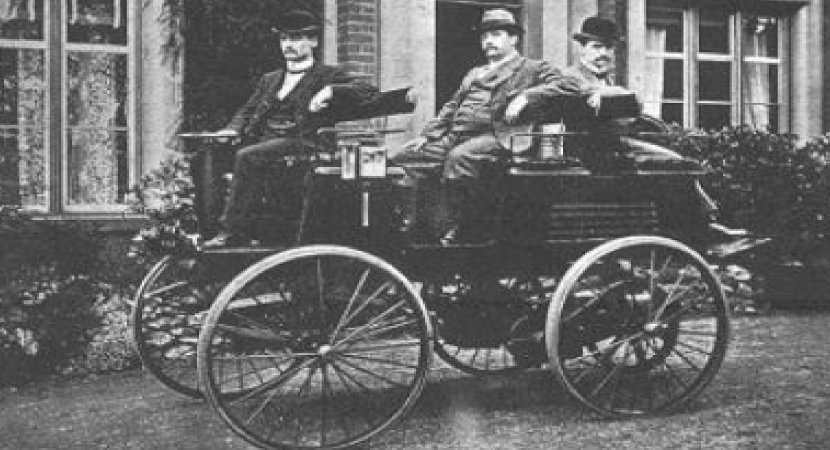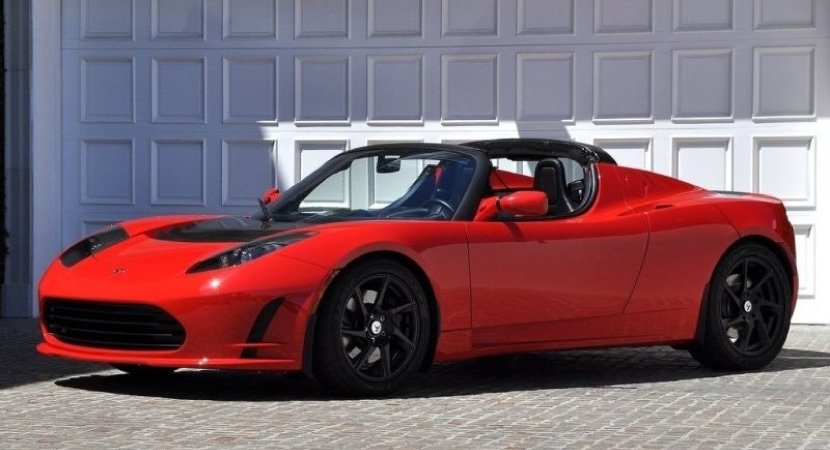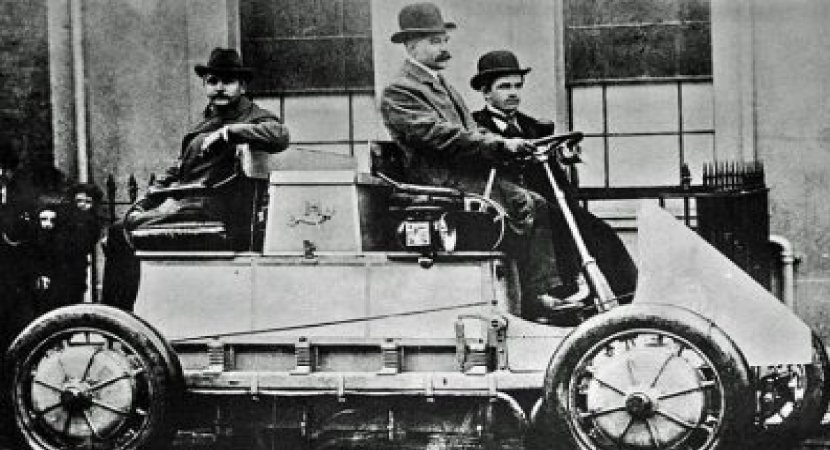The birth of the first ever electric car. Brief history of electric cars
Before diving into the article, there are a few terms that you need to get familiarized with in order to understand the basics of electric car inventions. Starting from the car types;
- A hybrid (HEV): A hybrid car is equipped with a battery but cannot be charged from the mains or a charging station. It is usually fueled by liquid fuel like gasoline.
- A plug-in hybrid (PHEV): This vehicle has dual engines; you can charge its battery and take it on long trips or just fuel it up with gasoline.
- All-electric vehicles (EV, AE): It is only driven by its battery charged by an electric source.
- Plug-in electric vehicles (PEV): Any vehicle that has the tendency to be charged or partially charged is put in this category, basically all the aforementioned terms can be incorporated here.
Contents
The First Ever Vehicle
The first ever vehicle goes as back as the invention of wheel; when people found a more convenient way of transportation. It all started from there. From horse driven carriages to eventually steam engines and now, electric cars. The first widely accepted automobile was the Dampfwagen by Cognot which was used to draw artillery. Prior to this was the steam tricycle by Nicholas Joseph Cugnot but it was not as well received until the 1800s. By that time the steam engine had built its trust among people with successfully powering factories and train engines. While the steam engine did make quite a mark, it still had a few drawbacks. It had a prolonged startup period; the train required at least an hour before it could start its trip. Not only this but it also required a constant water supply to keep it running.
According to Oxford Dictionary, the definition of a car is “A road vehicle, typically with four wheels, powered by an internal combustion engine and able to carry a small number of people.” Hence, technically, Cugnot’s Dampfwagen was not the first car. It was François Isaac de Rivaz in 1807-8 who was the first person to equip an internal hydrogen engine to haul a four-wheel gizmo. The hydrogen was kept in a balloon and combusted using a Volta starter.
In 1870, Siegfried Marcus introduced an internal engine that was fueled with the combustion of gasoline. Siegfried made progress from there on, inventing first, the two-cycle engine and then the four-cycle engine. Later on he further incorporated a carburetor, magneto ignition and steadily, brakes, clutches and steering came into being. The resulting invention looked very much like the strategic and the common motor vehicle.

Four-Stroke Engine
Most of the automobiles we use today such as cars, trucks, and motorbikes (except a few that use two-stroke engine), are equipped with the four-stroke engine. It was invented by Nikolaus Otto in 1862. It is the most common type of internal combustion engine which delivers one power stroke for every two cycles of the piston. The four strokes include:
- An intake stroke, which increases the volume for the fuel-air mixture to go into the chamber.
- A compression stroke, which compresses the fuel-air mixture when the piston moves up to the top. Combustion begins here.
- A power stroke, which increases the pressure caused by the heat released from the combustion of hydrocarbons, as a result of which the gas is pushed down on the piston.
- An exhaust stroke, which pushes out the residual exhaust gas through the piston as it moves upward.
A couple of decades later, in 1893, the first diesel powered engine came into existence by Rudolf Diesel. Diesel, Bentz and Ford are the names of a few automobile companies that are still very famous for their futuristic cars. Karl Benz was the person who developed the ‘world’s first production vehicle’ in 1886 which was later mass produced by The Ford Model T in the early 1900s.
Progression of Electric Cars
In the early 1900s, a British engineer, Robert Anderson came up with a crude electric carriage which was later followed by the French and the English inventors. The electric cars came with numerous problems in the beginning. The gears and ignition took a lot of strength and once started, made a loud racket with the emission of unpleasant fumes. Despite these drawbacks, they immediately got a good response from the market.
Around 1890, William Morrison became the first person to successfully manufacture an electric vehicle. It had a capacity to seat 6 passengers and had remarkable maximum speed of 14 miles per hour. From then onwards, electric vehicles became prime interest of engineers. They soon progressed to such an extent that the New York City had a large sum of about 600 electric taxis on the road by the 1900s. The sales only kept growing for the next decade. Another British engineer, Thomas Parker, was responsible for the introduction of the Flocken Elektrowagen in 1884 which was later launched in Germany in 1889.

The only problem faced by the owners of electric cars was the distance they could cover before their battery ran out. People had to opt for steam powered cars for long distance travels until the 1910s, when the rechargeable electrical engines came out. The cars became much easier to drive and once again, became the center of appeal.
Car manufacturers at the time also paid close attention to the needs of their customers. They started working on hybrid cars and ways to improve the already existing electric cars.
In 1914, Henry Ford partnered with Thomas Edison to work on methods to come up with low cost electric vehicles. The focus at the time was largely on electric cars due to their superiority over the steam engine in terms of emitting harmful fumes and the consumption of large quantities of fuel. However, things did not go as planned. Ford’s mass production of their electric cars cost almost three times the cost of Model T which priced at $650 at the time. However, Ford’s electric vehicle was at a staggering $1,750.
Charles Kettering made significant progress to the gasoline engines by removing the need for the hand crank. He managed to do so by introducing an electrical starter, abolishing the need of excess combustion to start the vehicle. The idea, however, was introduced by H.J Dowsing in 1896.
Fall in the Appeal of Electric Cars
By 1935, the concept of electric cars seemed to vanish. Road systems improved ultimately, leading to comfortable road travel with the combustion engine vehicles. Electric vehicles got their final blow with the discovery of new and abundant crude oil reserves. People once again preferred the cheap combustion engine vehicles over the pricey electric ones. For the next three decades, combustion engines remained the centre of attention, until the 1970s when the oil crisis struck.
Who Made the First Electric Car?
As we have already read, there is no particular person to be titled as the first person to have invented an electric car. The progression into the birth of an electric car was a series of inventions. Different companies and engineers pioneered different strategies to pre-existing innovations in the direction of electrical engines.
In 1834, Thomas Davenport, a Vermont Blacksmith built a small electric vehicle model that was able to run on a small, circular electrical track. The invention was remarkable, the only limitation was the absence of a rechargeable battery that halted the ability of the cars to cover long distance travels. This problem was solved by the French Physicist Guston Plante, who developed his lead-acid battery in 1859. The battery further underwent progress by another Frenchman named Camille Alphonse Faure, who increased the capacity of the batteries in 1881. This development soon led to the mass production of batteries.
Engineers set their priorities straight, listing a rechargeable battery before they could focus on electricity being an alternative to combustion engine vehicles. Anyos Jedlik started off by developing an electrical motor in 1898, bringing the entire concept to reality. Next, he introduced the motor into a miniature model car which was successfully hauled by his electrical motor. Here on out, was the gateway to the production of electric cars.
A Brief Timeline
It all started by small-scale electric cars fueled by non-rechargeable primary cells made by Professor Sibrandus Strating and his assistant Christopher Becker in 1834.
Franz Kravogl, an Austrian inventor, unveiled his electric car prototype at the World Exposition in 1867. The car was actually a two-wheeled cycle which was not very reliable or suitable for the streets. In 1881, the three-wheeled vehicle by Gustave Trouve came into being. This led to the development of the world’s first outboard engine which served as a motor engine for his tested Coventry-Rotary pedal tricycle.
The Electrobat was the first successful automobile developed by Mechanical Engineer Henry G. Morris and Chemist Pedro G. Salom in 1894 in Philadelphia, Pennsylvania. The car was made with heavy and high quality steel to keep it from falling due to its large lead battery. The late 1890s to the early 20th century was known as the Golden Age of technology.
Then came the decline in the electric vehicles due to the newly found oil reserves and the well-developed roads. The technology was only used to forklift trucks, milk floats in the UK, golf carts and automobiles. The technology remained dormant until its resurrection in the 20th Century.
First Electric Car by Toyota
Let’s dive into the history of Toyota. The company released its first hybrid Prius in 1997 in Japan which became the first hybrid powered vehicle to be mass produced. It was then sold worldwide in 2000s. The rising prices of gasoline and the awareness of carbon emissions to the atmosphere helped Toyota’s cause and as a result, Prius sold like hot cakes. Toyota used a nickel metal hydride battery which is known to be the technology supported by the Energy Department’s research. Honda, however, was the first hybrid seller in the US, releasing the insight hybrid in 1999.

First Electric Car by General Motors
The Electrovair was the first electric car prototype by General Motors. The car was hauled by a silver-zinc battery and delivered 532 volts. After one unsuccessful attempt at the invention of electric cars, GM took a pause for years until the mid-1990s, when they came up with The EV1 which became the first mass produced electric car by the GM. EV1 was featured in the famous Who killed the Electric Car? It had the tendency to go from 0-50 miles in a matter of seconds. However, EV1 was never produced commercially, and was discontinued in 2001.

First Electric Car by Tesla
The first electric car of the 2000s was by Tesla. They launched the Roadster in 2008, known as one of the fastest electric cars around the world. It had an exceptional battery and hauling power. It was the first car to hit the street, equipped with a lithium-ion battery. Roadster is still being successfully sold. It has the tendency to go more than 320 kilometers per charge. It can also reach an incredible top speed of 200 km/h. Tesla sold over 2,450 Roadsters in four years (2008-2012) and now has the honor of being the first company to be sending a car into space.
Another invention by Tesla that rejuvenated the interest of electric cars in people was the production of an electric sports car. The company received a $465 million loan from the Department of Energy Loan’s Program Office; a loan that Tesla was able to return 9 years early. Tesla used the money to develop a manufacturing industry in California and now is one of the biggest and the most trusted car companies.
Tesla’a invention spurred an interest in many automotive makers to develop their own electric cars. Consequently, in 2010, the Chevy Volt and the Nissan LEAF were introduced in the US market. Volt was a plug-in with a gasoline engine that switched to its electric side once the gasoline was out. Comparatively, the LEAF was an all-electric vehicle or an EV and as the name suggests, was only powered with an electric battery.

Today, there are 23 plug-in electric and 36 hybrid models available in a variety of sizes, ranging from a dual passenger Smart ED to the mid-sized Ford C-Max Energi, and the BMW i3 luxury SUV. Currently, there are more than 234,000 plug-in electric vehicles and 3.3 million hybrids on the road in the U.S. As gasoline prices continue to rise, electric vehicles are getting cheaper by the day and consequently, more famous among consumers.
The First Hybrid
The first gasoline electric rail car was made by William H. Port. William devised the same concept for a boat propulsion system the same year as well.
Later in 1901, Ferdinand Porsche developed Mixte, which was a four-wheel-drive hybrid version of the “System Lohner-Porsche” electrical carriage. Mixte was displayed at the Paris World Fair. Another hybrid came into being in 1905 by Henri Piper. It comprised of an electric engine as well as a gasoline tank, whereas the Mixte was a two-wheeler, equipped with batteries that were responsible for its entire locomotive and had two front-wheel hub-mounted motors.

Environmental Impact
If electric cars, plug-ins and hybrids manage to take over the gasoline powered engines and light-duty vehicles in the US completely, there could be a reduction in the consumption of fuel by 30-60% and carbon emissions by 20% altogether.
President Barack Obama in 2002, launched the EV Everywhere Grand Challenge which brought together America’s engineers and scientists to come up with better suited electric vehicles with a much reduced cost. He directed them to reduce the price to as much as that of the gasoline powered vehicles by 2022.
The Department’s Advanced Research Projects Agency-Energy (ARPA-E) is working to incorporate high-tech cost-effective alternatives to electric cars that could help reduce the pollutant emissions.
With all these environment-friendly projects already underway, the future looks good and exciting, especially, for the environment enthusiasts.
